
13 minute read
TV/STREAMING: THE EXPANSE
NEW VISUAL VISTAS PROPEL THE EXPANSE INTO HIGHER ORBIT
By TREVOR HOGG
Images courtesy of Amazon Studios.
TOP: From left, Rocinante crewmates Alex Kamal (Cas Anvar), Amos Burton (Wes Chatham), Naomi Nagata (Dominique Tipper) and Jim Holden (Steven Strait) land on Ilus. Human colonization of the solar system has led to a mining colony in an asteroid belt being caught in an escalating political and military conflict between Earth and Mars. Amidst this hostile environment is a conspiracy to weaponize an alien pathogen that has a mind of its own. The Expanse spans eight novels, three short stories and five novellas authored by Daniel Abraham and Ty Franck under the pen name of James S. A. Corey. When the Syfy Network decided not to renew the television adaptation of the science fiction mystery series created by Mark Fergus and Hawk Ostby, Amazon Studios came to the rescue of fans to release a fourth season and is currently producing a fifth.
“There were some changes in terms of how we delivered things such as switching to HDR, which was a big plus for us,” notes Executive Producer and Showrunner Naren Shankar. “We were able to develop some much more interesting looks in Season 4, such as all of the stuff on the planet [of Ilus] being in anamorphic 2:39:1.”
“One switch that did happen over the course of the seasons was a reliance on Redshift and other graphic engine renderers that allow us a lot more iterations in a much more efficient way,” remarks Senior Visual Effects Supervisor Bret Culp. “We’re constantly improving everything. We went back to one of our big locations from Seasons 2 and 3, and gave it a big Season 5 upgrade by putting a lot more detail in the geometry.” An extensive amount of bluescreen is utilized to achieve the necessary size and scale. “A whole section of the biggest stage that we use is cordoned off as a pre-walled bluescreen stage. We shoot a lot of the wire stuff there. There are so many sets on this show, we put them on wheels and roll them in and out, like a Tetris game. The height of the Martian construction dome from Season 4 would be a third higher than the CN Tower, so we are clearly building a small portion of that and extending.”
A director is responsible for a pair of consecutive episodes, resulting in even and odd blocks which are divided between two
visual effects teams. Visual Effects Supervisor Robert Crowther and Visual Effects Producer Sarah Wormsbecher are responsible for the even blocks, while Visual Effects Producer Krista Allain focuses on the odd blocks. “The books are written with a scientific angle, and Naren has a background in that as well,” states Culp. “We definitely lean heavily on the science and have embraced it.” A multi-Oscar-winning sci-fi thriller by filmmaker Alfonso Cuarón was also a source of inspiration. “We did talk a lot about Gravity in the early years because that was a great model for what we were

TOP: David Strathairn portrays Commander Klaes Ashford, who returns in Season 4 as the second-in-command of the Behemoth.
BOTTOM: Cas Anvar portrays veteran Martian Navy pilot Alex Kamal, who is responsible for flying the Rocinante.



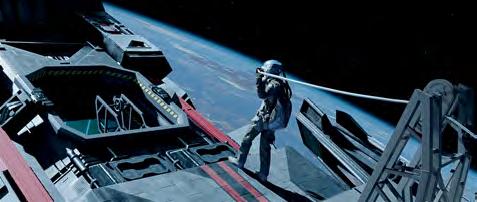

trying to achieve,” remarks Shankar. “The Expanse wasn’t going to be Star Trek and we didn’t want to do World War II fighter planes in the Pacific. We wanted these ships to move like real ships and to have the space battles be real.”
Season 4 had around 2,400 visual effects shots across the 10 episodes created by Spin VFX, Rocket Science VFX, Krow VFX, Mavericks VFX, MARZ, Torpedo Pictures, Deluxe VFX, Switch VFX and Playfight. “Luckily, we have a group of incredible vendors, ones that have been with us for almost the entire duration of the series,” remarks Allain. “They work closely with us to manage the schedule. A lot of shots start much earlier than the wrap of production.” Sharing of assets and shots among the vendors is part of the post-production process. “We usually allocate the work based on the skillset and background of a vendor,” notes Wormsbecher. “You get to work with a vendor on a certain type of effect or shot for this show, and then it makes sense to go to them for that specific thing. There are some rare cases where maybe three or four vendors might touch one shot.”
The Expanse has its own dedicated team of concept artists. “We actually start our concept art team with the writers’ room, so by the time we get to prep for the beginning of the season we have a lot of environments already created partially because there are so many of them in the show,” remarks Culp. “The lead time on getting these done is fairly long because they’re very detailed.” There is also a practical component that assists with shooting scenes. “I find it helpful on set to have something that the director can look at and the actors have an idea, rather than flaying around or trying
to imagine what’s going to be there,” states Crowther. “The entire space battle this year was previs so the director would know the kinds of movements the ships were going to be making and the actors could react appropriately.”
The protomolecule, an alien pathogen, has taken on many forms including that of a deceased detective from Ceres Station. “Season 3 was about the hybrid weapons, and in Season 4 a whole planet was based on it and there was Proto-Miller,” remarks Culp. “The protomolecule is using Joe Miller’s (Thomas Jane) essence to do its work. It was interesting bringing Miller back, but it wasn’t really Miller. There were ways that we manipulated the image in order to show that, such as using a glitchy effect. It manifests itself in everything from Proto-Miller, hybrids and the giant structures on Ilus that become awakened. It’s constant evolution and we’re not done yet.” Abrupt glitches occur in the image of Joe Miller to emphasize his ongoing battle with the protomolecule. “I was inspired by an effect that David Lynch did with the Twin Peaks rebirth. It was a back-and-forth time thing that I had done years before using a SideFX software called Tima. Where the image in the alpha channel was white, you might see four frames in the future where it’s black. You might be four frames in the past and middle grey would be the current time. You can get into some interesting ideas of manipulating the time within a single image. It ended up becoming more of an editorial thing in many cases than that time filter effect.”
Abstract state-of-consciousness moments between Miller and the Captain of the Rocinante, James Holden (Steven Strait),
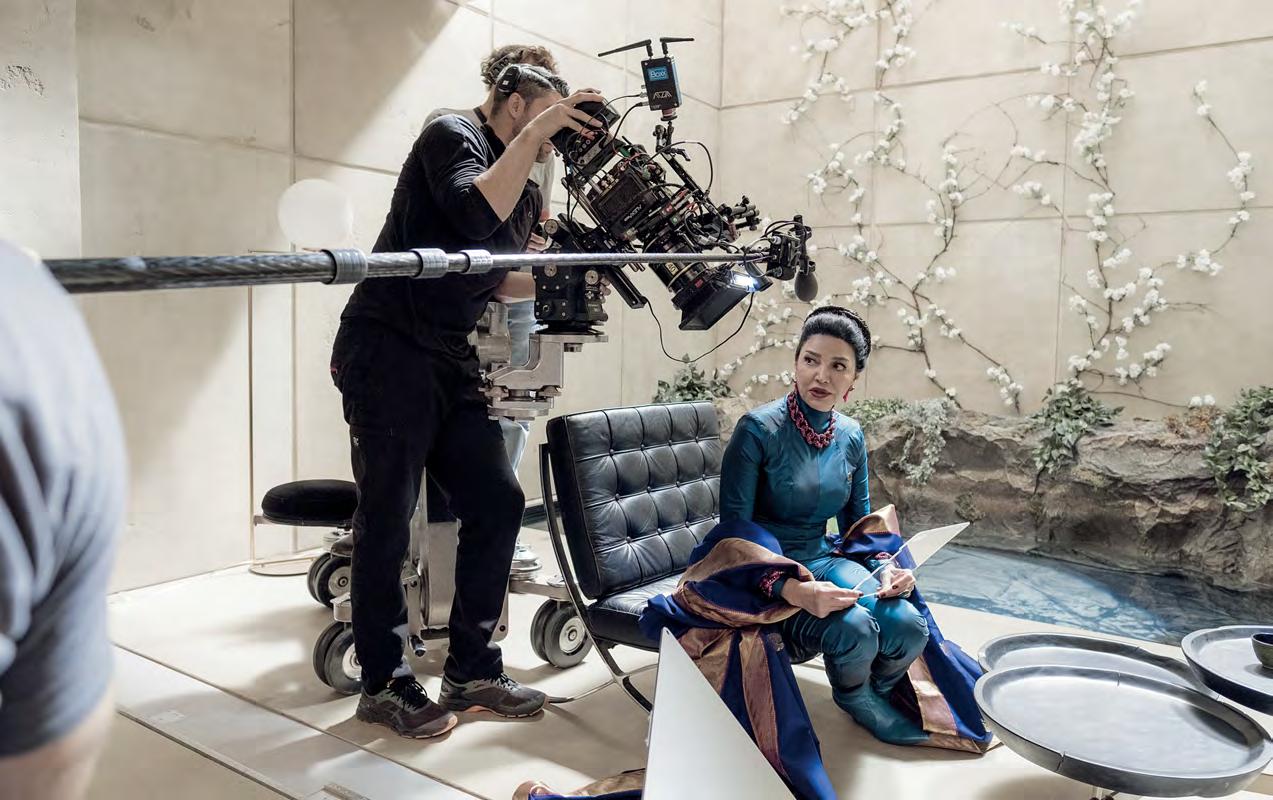
“We did talk a lot about Gravity in the early years because that was a great model for what we were trying to achieve. The Expanse wasn’t going to be Star Trek and we didn’t want to do World War II fighter planes in the Pacific. We wanted these ships to move like real ships and to have the space battles be real.” —Naren Shankar, Executive Producer/Showrunner
OPPOSITE TOP: Dominique Tipper portrays talented Belter engineer Naomi Nagata, who has never set foot on a planet before arriving on Ilus.
OPPOSITE BOTTOM: The previs, bluescreen plate photography and final composite of the tether spacewalk between the Rocinante and Barbapiccola above Ilus.
TOP: Shohreh Aghdashloo gets ready on set for her role of Her Excellency, Chrisjen Avasarala. Secretary-General of the United Nations.


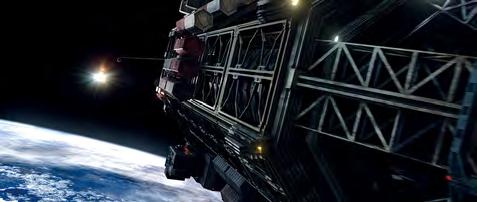
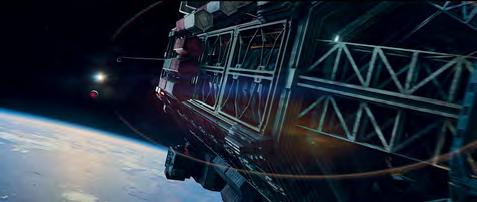
TOP TO BOTTOM: The concept that there is a one-kilometerlong space tether between the Rocinante and Barbapiccola, with the later catching drag, was tough to imagine.
OPPOSITE TOP TO BOTOM: For the tsunami on Ilus, special effects built the set inside an on-set pool and fired off water canons and dump tanks. “[The Rocinante landing on the surface of Ilus] was so emotional because this is the first time that we see the Rocinante landing in an atmosphere environment, and Naomi Nagata (Dominique Tipper) has never set foot on a planet before. It felt like all of the seasons were leading up to that moment and the visuals did not disappoint.” —Krista Allain, Visual Effects Producer
originated from the source material. “In Season 4 particularly, we actually get inside Miller’s head and have a protomolecule POV for the first time and see how it views the world,” states Shankar. “The relationship of Miller and his protomolecule version with Holden is one of the big engines that drive the story.” Episode 409 introduces the Miller-Bot, where Miller projects himself inside of a machine and uses it as a tool to move around a room. “My initial idea was of these little learning robot things where you can bend their legs up, so instead of having four or six legs moving across the table, they only have two,” remarks Culp. “How do they adapt and learn to move out of necessity?” The Miller-Bot’s ability to speak was inspired by Chladni Plates. “The Miller-Bot was created by these main plates that were used to move around and covered with these fine cilia-like metal structures that Miller would vibrate in order to talk. As that vibration happened, we would plug in clips that would interpret the actual sound of Thomas Jane speaking as Miller into a Rorschach resonance pattern that would then flip up the little cilia. That was a cool scene to do.”
A major new setting for Season 4 is the Earth-like planet of Ilus, consisting of one large continent and thousands of islands scattered throughout a giant ocean. “Every season we’re world-building and it feels like a brand-new series,” remarks Allain. “Ilus was a challenge but that was the joy of it too. We shot in a cold quarry out near Hamilton [Ontario] and used a lot of practical locations that were enhanced. During our many discussions in prep we talked about what Ilus look liked. What color are plants? What vegetation is there? Are there animals? What we ended up landing upon is that there would be no tall trees. We had to remove or reduce the treeline in hundreds of shots. That’s something the average viewer would have no idea about. However, those tiny details help to make it feel real.”
“The most challenging thing is wrapping your head around things that may not sound that difficult initially, like de-orbiting maneuvers where you slow going forward to be able to drop,” states Culp. “We’ve done a good job, and as a result it has been made clear to us that we are favorites with a lot of people at NASA and have an open invitation to visit the JPL [Jet Propulsion Laboratory].” The scene of the Rocinante landing on the surface of Ilus is a personal favorite of Allain’s. “It was so emotional because this is the first time that we see the Rocinante landing in an atmosphere environment, and Naomi Nagata (Dominique Tipper) has never set foot on a planet before. It felt like all of the seasons were leading up to that moment
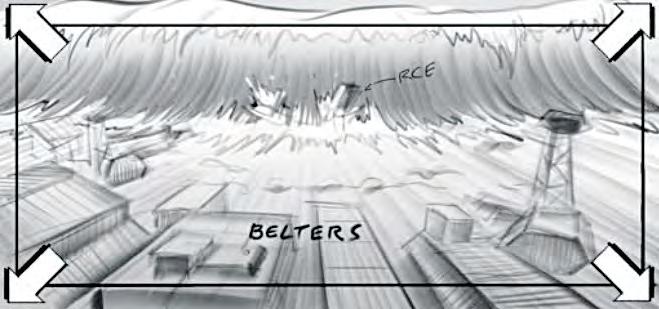


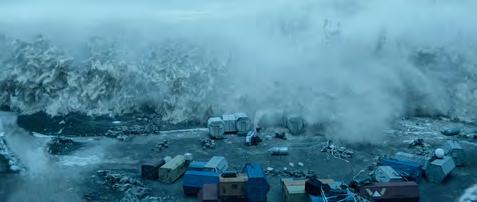
and the visuals did not disappoint.” Shankar adds, “We had looked at controlled landing footage of a Blue Origin rocket returning to a platform and actually got to show that sequence Krista is talking about to the designers at Blue Origin in Seattle, and they loved it.” The Rocinante towing the Barbapiccola above Ilus was hard to envision. “Imagine the forces of these huge ships in orbit and the Barb is catching drag,” remarks Crowther. “Just the concept that there is this one-kilometer-long space tether between the ships. It was a tough thing to imagine and it came together well.”
“We talk a lot about making visual effects feel like the shots are operated by real human beings with cameras,” remarks Shankar. “That’s not easy to do when you’re talking about realizing things in space, because the distances are big and the way objects move against different stars can be incredibly deceptive. We talk a lot about filmmaking. Everybody here is so fundamentally responsible for this great cinematic look. We have come so far in four seasons and now in a fifth. Every year we come up with new ways to destroy sets or go to places we haven’t been before.”
The Expanse of Special Effects
A member of The Expanse production team from day one is Special Effects Coordinator Tim Barraball. “Since we’ve been doing The Expanse for so many years, there is a real family feeling to the show that makes making it that much more enjoyable. There are a few more things that visual effects do now than we did in the past, like floating objects. I made a passionate speech early on in a Season 5 meeting about actor interaction because they didn’t want to do squibs.”
The zero-gravity scenes utilize the expertise of stunts and special effects. “What I created at the beginning of Season 2 was a big teeter-totter gimbal that has several different attachments on one end,” explains Barraball. “You can sit or stand or hang from it. It’s counterweighted on the back and can go on a track and pivot around. Adam Savage was famously on it as a dead spaceman at the end of Season 2.”
A cold, wet and muddy quarry doubled for the planet of Ilus. “When the dust storm first hits, James Holden (Steven Strait) and another character turn around as the whole room explodes inwards,” remarks Barraball. “We did some huge air canons outside the set full of dirt and dust, breakaway glass in the windows, and had all of the set pieces inside on little jerk rams. Everything went at once. Stunt guys were in there. For the tsunami, we built the set inside of an on-set pool. We fired off these water cannons and dump tanks. It was quite the deluge. Steven Strait was in the scene getting nailed by this water.
“For Season 4, we built these moon buggies that drove around on Ilus,” explains Barraball. “We stripped down regular golf carts, did some conceptual art and completely rebuilt them. That took several months.” A space shuttle crashes on Ilus. “We had a lot of spot fires all over the crash scene. Burning piles of steel. There were 20 to 30 characters strewn everywhere impaled by pieces of metal. It was a challenge keeping them safe, yet still create a sense of peril. I had a great team, and it really does look like hell on Earth.”
“For Season 4, we built these moon buggies that drove around on Ilus. We stripped down regular golf carts, did some conceptual art and completely rebuilt them. That took several months. We had a lot of spot fires all over the [space shuttle] crash scene [on Ilus]. Burning piles of steel. There were 20 to 30 characters strewn everywhere impaled by pieces of metal. It was a challenge keeping them safe, yet still create a sense of peril. I had a great team, and it really does look like hell on Earth.” —Tim Barraball, Special Effects Coordinator










